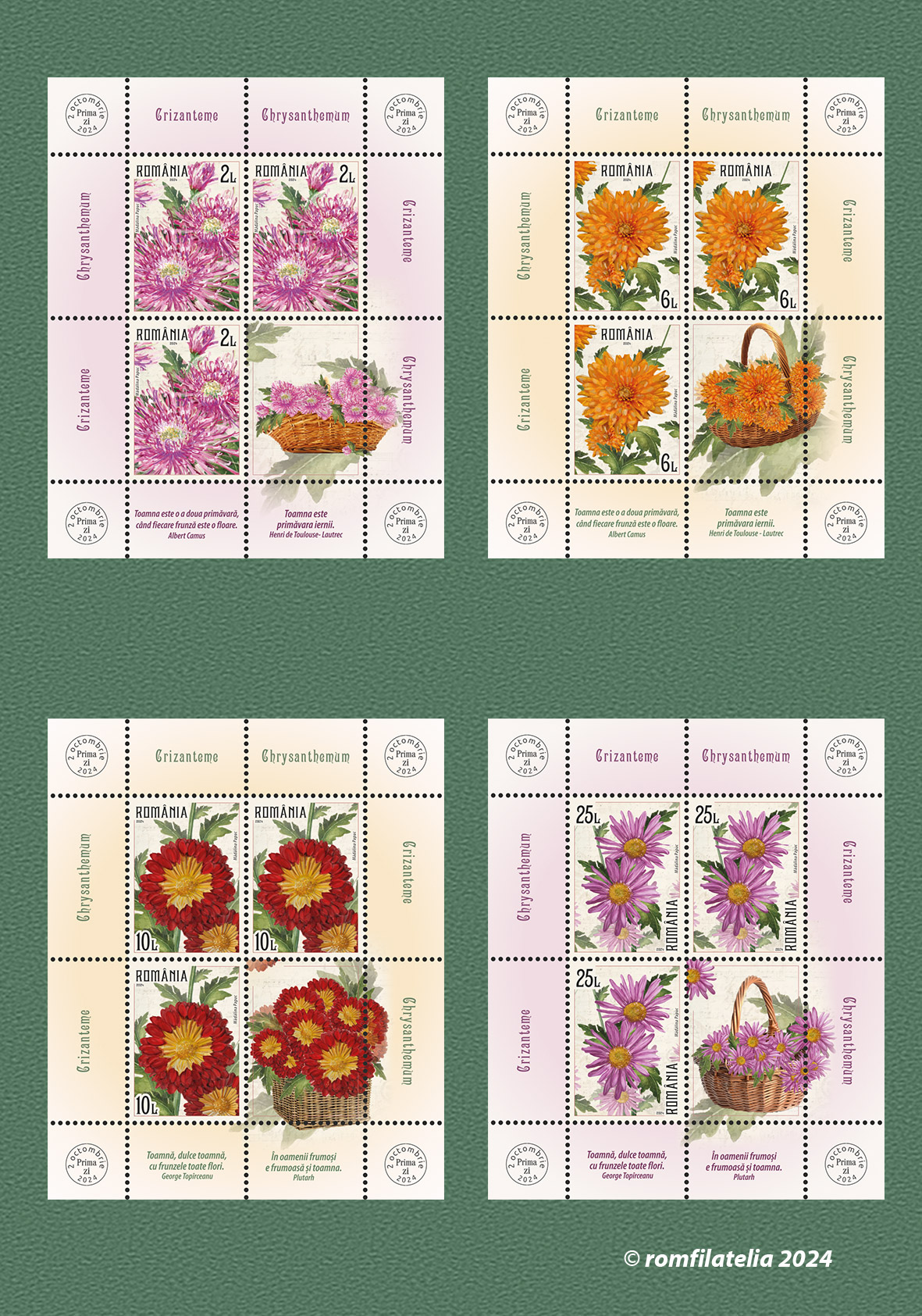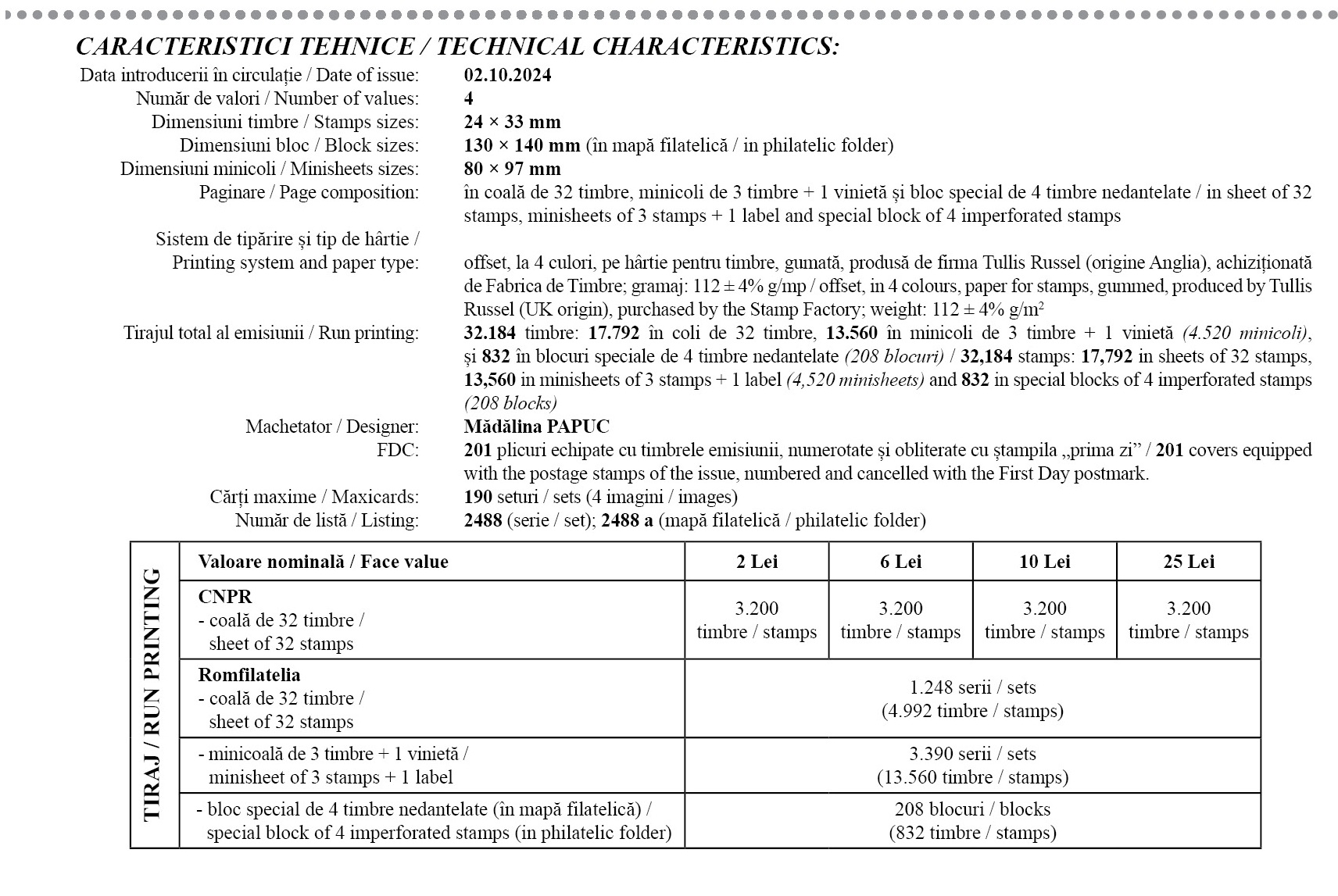 Romfilatelia introduces into circulation on Wednesday, October 2nd, this year, a postage stamps issue entitled Chrysanthemums.
Romfilatelia introduces into circulation on Wednesday, October 2nd, this year, a postage stamps issue entitled Chrysanthemums.
Composed of 4 postage stamps with face values of Lei 2, Lei 6, Lei 10 and Lei 25, a First Day Cover, a philatelic folder with special product in a limited edition and a set of 4 maxicards for the passionates of maximaphily.
The postage stamps issue presents lovers of beauty with images of flowers often known as tufănele, dumitrițe or autumn daisies, which, in popular belief, symbolize beauty, longevity, and rejuvenation. It is a symbol of optimism and joy. In Japan, chrysanthemums are celebrated annually during the Festival of Happiness. The chrysanthemum was also adopted as the seal of the Emperor of Japan.
Chrysanthemums belong to the botanical genus Chrysanthemum in the family Asteraceae (Compositae). Their name derives from the Greek words “chrysos” meaning gold and “anthemon” meaning flower.
There are about 200 known species of the genus Chrysanthemum, but the exact number is difficult to pin down due to taxonomic changes. Thus, some species that have been classified in the genus Chrysanthemum, can now be assigned to other genera such as Leucanthemum, Leucanthemopsis, Argyranthemum, Tanacetum etc. For example, the daisy was known as Chrysanthemum leucanthemum. Now, the valid name is Leucanthemum vulgare.
Species of the genus Chrysanthemum are widespread in eastern Europe, Asia, Canada, subarctic America. There are no native species of Chrysanthemum in the Romanian flora, if we consider the current nomenclature. In ornamental culture, however, we have many species and countless cultivars derived from them.
The best-known are Chrysanthemum indicum (tufănele or dumitrițe), native to China, Korea and Japan, and Chrysanthemum × morifolium, a hybrid native to China. Both species are perennials with late annual flowering (August – November). The inflorescences are solitary or numerous, ranging from daisy-like to globose, with straight or curved, outward- or inward-facing, narrow or wide, straight or curved ligulate flowers in a wide variety of colours. Interestingly, chrysanthemum plants can be trained to grow not only upright, but also in cascade or bonsai forms.
Chrysanthemums were introduced into cultivation over 2500 years ago in China, where they are still popular today. Chrysanthemums are also very popular in Japan, where they are used not only as a decorative plant, but also for flavouring drinks or making salads (fresh flowers).
The richest and most famous collection of chrysanthemums in our country is located at the “Anastasie Fătu” Botanical Garden of the “A. I. Cuza” University of Iasi. This collection can be admired at the end of October – beginning of November during the exhibition “Autumn Flowers”, organized annually since 1976.
Romfilatelia thanks Prof. Paulina Anastasiu Ph.D., Manager of “Dimitrie Brandza” Botanical Garden of the University of Bucharest, for the documentary support provided to the development of this postage stamps issue.



